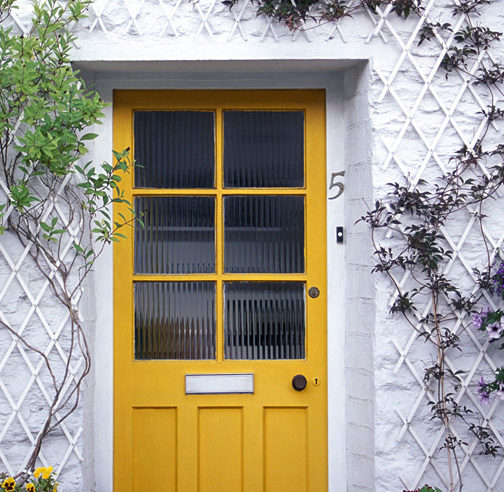New planning rules on house-building might lead to a rise in crime, such as more burglaries, and cause a ‘flight from crime-ravaged areas’, according to university criminologists in a letter to The Times.
In their letter published on Wednesday, October 23, Dr Rachel Armitage, reader in criminology at Huddersfield, and Prof Ken Pease, and 67 other academics, called for the Government to re-consider home security standards, ‘with the emphasis on simplicity. All new homes should have good levels of in-built security measures that have been thoroughly tested,’ they wrote.
And Dr Rachel Armitage is the author of a new book that details the effectiveness of architectural design and housing estate layout in cutting crime. The UK is a world leader in adopting and developing the principles of ‘designing out crime’ and they have proved to be a big success, says Dr Armitage, who is Associate Director of the Applied Criminology Centre at the University of Huddersfield. Crime can be reduced by more than half when measures are introduced, she argues.
For her criticisms in detail, see her blog.
Police forces and local authority planning departments work together to ensure that planning applications are assessed for crime risk, and that proposed developments incorporate crime prevention through environmental design measures. But Government plans to boost house building by de-regulating the planning system could sweep this away, says Dr Armitage, who has been researching, writing and teaching ‘designing out crime’ for more than ten years.
As the consultation period over the planning changes nears its end, she has been in talks with organisations such as the Association of Chief Police Officers, and she has held meetings with the recently-appointed Victims’ Commissioner, Conservative peer Baroness Newlove – the widow of murder victim Gary Newlove and a campaigner against anti-social behaviour.
Dr Armitage says: “This is a devastating blow for those concerned with the security of homes, and raises many concerns – not least the fact that decades of policy, guidance, incentives and regulations to encourage housing to be built to deter offenders will be lost.”
Her new book is entitled Crime Prevention through Housing Design: Policy and Practice. She says: “It is based on academic research but aims to get the message across to practitioners such as planners, architects and the police.” Her career has included a role as a Senior Consultant for crime reduction body Nacro and a year as a Senior Research Fellow at the Jill Dando Institute of Crime Science at UCL.
“A lot of people think that designing out crime is about physical security, such as locks and bolts, but it is really about very subtle changes in architecture.”
For example, a housing estate could be designed so that sight lines between properties are not obstructed by high walls or overgrown trees – known as “natural surveillance”. Footpaths – enabling would-be offenders to come and go quickly and easily – can be limited, and other measures include narrowing the entrance to an estate and introducing a change in road colour or changing the texture to red brick.
“This is a subtle way of giving an impression to offenders that they are coming to a private area, without having to have any gates or fences,” said Dr Armitage.
Crime Prevention through Housing Design: Policy and Practice, by Rachel Armitage, is published by Palgrave Macmillan. Visit www.palgrave.com
About the Government consultation
The housing standards review was launched in October 2012 after the Coalition’s housing and construction Red Tape Challenge, introduced in spring 2012.
According to the Department for Communities and Local Government, it was a fundamental review of the building regulations framework and voluntary housing standards which aimed to rationalise the large number of codes, standards, rules, regulations and guidance that add cost and complexity to the house building process – while delivering quality, sustainability, safety and accessibility.
About 80 per cent of private homes meet National House-Building Council (NHBC) minimum standards set through the NHBC warranty. As the consultation admits, that leaves 20pc that do not. As for the official statistics, despite a fall since the mid-1990s peak in crime, there were still around 700,000 incidences of attempted or successful burglary in 2011-12. According to the consultation document: “Government takes the view that new homes should provide reasonable protection against the risk of burglary but that the standard of security required should be proportionate to risk.” As the document added, home builders are reluctant to market security features ‘which they feel risk creating ‘security blight’ in case this deters purchasers’. Any effort to raise standards would increase costs to home builders, it is plain from the consultation document. The question, then; not only how to set a minimal standard, but how to deliver ‘enhanced levels of security where local risks are higher’, in a high-crime neighbourhood or even a street in an otherwise lower-crime district? In other words, leave domestic security to market forces, or Building Regulations, or set some standard?
For the consultation which ran from August to October 2013 visit the gov.uk website.
For the proposed domestic security standards, covering only new homes, visit chapter three of the technical standards document.
Covered are doors, door frames, locks and windows, lighting, and bicycle storage.









